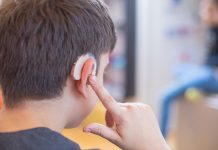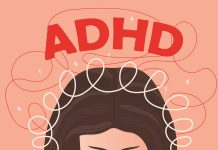Clare Maddocks, Education and Research Officer at the British Association for Music Therapy, discusses the benefits of various types of Music Therapy in promoting improved mental health
What is Music Therapy?
Music Therapy is a clinical psychological intervention that uses music in all its forms to support cognitive, behavioural, social, physical, and emotional needs. Sessions are offered on a 1:1 or group basis for people of all ages and abilities. They are delivered by qualified Music Therapists who are registered and regulated by the Health and Care Professions Council (HCPC).
Music is a powerful and universal tool that offers a safe non-verbal space in which clients can connect, communicate, and interact with one another and their therapist. Multiple approaches exist, such as those informed by psychodynamic theory, which can include psychoanalytical and humanistic models, as well as community Music Therapy and the music-centred approach.
The form of music used in each session is tailored to a client’s mental, emotional and physical needs. The variety of musical scope is vast, and can include structured activities such as song writing, instrumental turn taking and singing of familiar music to unstructured activities such as instrumental or vocal improvisation. The therapeutic relationship is key, and it is through this that clients are supported to access music and use it however they may need it.
Who can benefit from Music Therapy?
Given the strong physiological and individual emotional responses we each have to music, Music Therapy offers a space where anyone can access music. Music Therapists work in the health, education, and social care sectors and are trained to work with people of all ages and abilities.
Activities are adapted to ensure they are accessible for each person. The aims of the therapy will also inform the process and material used within sessions. Sessions for any client may include activities such as singing, improvisation (using instruments or voice or both), listening to familiar music and possibly verbal interventions as well. The types of songs may then be tailored to the musical preferences of the client(s) and their cognitive or physical abilities, as well as age, particularly if working with young children.
There is a strong evidence base for Music Therapy, which has been found to help improve physical, emotional, behavioural, social and communicative outcomes across many different client populations. Essentially, music is universal, and participation in Music Therapy does not require any previous musical experience. It is about being open to exploring music with another (therapist), and there are many ways a client may do this.
Whether it be using a receptive activity such as music listening or active engagement such as playing instruments or singing, active participation in music has been shown to decrease heart rate and blood pressure, change respiratory rate (such as deeper and more relaxed breathing), and is an effective form of rhythmic entrainment that can help initiate, sustain, and motivate motor coordination.
There are, therefore, multiple ways that any person of any age or ability can access and be supported through Music Therapy.
This is a vast area, and there are Music Therapists currently working with patients with psychopathological conditions such as depression, schizophrenia and anxiety disorders. This includes in-patient care and community and forensic services. Music Therapy has been shown to impact a client’s sense of wellbeing and quality of life, as well as improve interpersonal, social and communicative outcomes for clients with mental health conditions.
Music Therapy for PTSD
Music Therapy demonstrates it can effectively help individuals with PTSD and dissociative conditions to:
- Alleviate avoidance, re-experiencing trauma and hyperarousal;
- Support stabilising behaviours, physiological entrainment and processing of trauma; (1)
- Service users report improved quality of life and reduction in interpersonal issues following Music Therapy; and (2)
- Guided Imagery in Music (GIM – one of the many different models of Music Therapy) utilises music listening in a deeply relaxed state to stimulate imagery, memories and feelings to help patients understand life issues holistically. GIM studies demonstrate how neurological changes in PTSD patients aid the management of cognitive processes such as hyperarousal. (3)
Music Therapy for depression
Carr et al. (2012) summarise that even short interventions of Music Therapy in in-patient care are effective. Structured musical participation with verbal discussion, regular contact, and establishing boundaries help patients build a therapeutic relationship, develop interpersonal skills, and build resources to help manage their conditions.
Adults with depression can, at times, be offered group Music Therapy. Greater use of Music Therapy within this population could also help reduce healthcare costs across communities:
‘Depression incurs high costs for healthcare systems and society because it may cause impairment in both psychological and socio-occupational functioning. Reductions in depressive and anxious systems and consequent improvement in everyday life functioning may reduce the costs that burden both healthcare systems and society.’ (4)
Music Therapy for schizophrenia
The Cochrane Review of Music Therapy for schizophrenia and schizophrenia-like disorders details:
- Positive impact on motivational, emotional and relational outcomes; and
- Improves ‘global state, mental state (general negative, depressive and anxiety symptoms), functioning (general and social), and quality of life. (5)
The authors stress that, given this high level of evidence, Music Therapy should be made ‘more widely available.’ (5)
Music Therapy for anxiety
Music Therapy can also support those with anxiety. The use of music (especially rhythm, music listening and instrumental playing) can directly engage the nervous system and help alleviate symptoms of anxiety. Given how accessible music is on streaming platforms, the use of bespoke playlists can often be used to help a client identify and create a tool which they can use in their everyday life to support managing their symptoms. Lu et al. (2021) conducted a meta-analysis of Music Therapy research on anxiety, which found that it significantly improved anxiety symptoms for clients.
References
- McFerrin et al., 2020; Carr et al., 2012; Bensimon et al., 2008
- Rudstam et al., 2017
- Beck et al., 2018
- Cochrane Review of Music Therapy for Depression, Aalbers et al., 2017 5. Geretsegger et al., 2017











